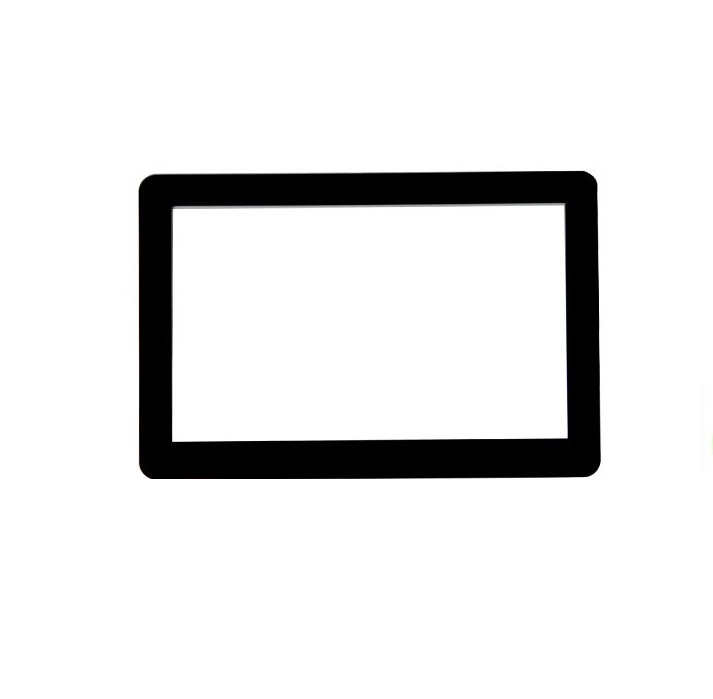In the realm of touchscreen technology, the choice between thick and thin cover glass is critical and can significantly impact the functionality and durability of a device. This article explores the distinctions, advantages, and practical applications of thick and thin cover touchscreens, helping users and manufacturers make informed decisions based on their specific needs.
Definition and Characteristics
Thick cover touchscreens feature a heavy-duty glass that typically measures 2 mm or more in thickness. This robust construction is designed to offer superior protection against physical impacts and environmental conditions, making it ideal for industrial and outdoor applications.
Advantages of Thick Cover Glass
The primary benefit of using thick cover glass is its enhanced durability and resistance to scratches and breakages. This makes it suitable for devices used in harsh environments where regular touchscreens might fail. Additionally, thick glass can support heavier touch inputs without flexing, which is crucial for high-stress applications.
Definition and Characteristics
Thin cover glass touchscreens, on the other hand, use a lighter, more delicate glass, typically less than 1 mm thick. This type of cover is more common in consumer electronics, where sleek design and lightweight are prioritized.
Advantages of Thin Cover Glass
Thin cover glass touchscreens are highly responsive and offer better optical clarity. The reduced thickness allows for more accurate touch sensitivity and a clearer display, which is beneficial for high-resolution applications. Additionally, thin cover glass makes devices lighter and more comfortable to handle, enhancing the user experience for everyday electronics.
Impact Resistance
Thick cover glass is more resilient against drops and blunt force, making it ideal for rugged devices. Thin cover , while less protective against heavy impacts, can still offer sufficient durability for everyday use through advanced tempering and strengthening techniques.
Touch Sensitivity
Thin cover glass generally provides better touch sensitivity and a smoother user interface due to its proximity to the touch sensors. Thick cover glass may require more forceful user interactions, which can be a drawback for applications needing gentle and precise touch inputs.
Industrial and Outdoor Environments
For industrial touchscreens and devices used in outdoor settings, thick cover is preferable due to its ability to withstand rough conditions, including exposure to water, dust, and extreme temperatures. These environments benefit from the ruggedness provided by thick glass.
Consumer Electronics
In consumer electronics, such as smartphones and tablets, thin cover is favored for its aesthetic appeal and functionality. These devices benefit from the sleekness and enhanced display properties, making them more appealing and easier to use in everyday conditions.
Technological Advances
Ongoing advancements in materials science are continuously improving both thick and thin cover glass. Innovations such as ion exchange and chemical strengthening processes are enhancing the durability of thin glass, while new manufacturing techniques are making thick glass lighter and more impact-resistant.
Market Trends
The demand for thin cover glass is rising with the growing market for portable consumer electronics, whereas thick cover glass remains critical for specialized industrial and military applications. Future trends may see a convergence in the technologies, with thin glass becoming tougher and thick glass getting lighter.
The decision between thick for touchscreens depends largely on the specific requirements of the application. While thick glass offers unmatched durability for challenging environments, thin glass excels in providing superior clarity and sensitivity for everyday use. Understanding these differences is crucial for manufacturers and users alike, ensuring that the chosen technology meets the intended operational demands and user expectations.

DINGTOUCH is a company specializing in the R&D and production of touch screen technology, headquartered in Shenzhen, China. However, as a professional touch screen supplier, DINGTOUCH commit to providing high-quality, stable and reliable touch screen products to meet the diverse needs of customers. Also We continue to carry out technological innovation and product optimization to ensure that its touch screen products have good sensitivity, accuracy and durability.
In addition to the products themselves, we also focus on cooperation and communication with customers. However, commit to providing customize solutions and excellent after-sales services. Through continuous efforts to improve product quality and customer satisfaction. So we have established a good reputation in the touch screen industry and won widespread market recognition.
PCAP maximum size 65”
Multi-touch
Optical bonding service/air bonding
LCD interface: HDMI/RGB/MIPI/LVDS/EDP, etc.
PCAP interface: IIC/USB interface
Also CTP can customize the cover glass surface treatment process AG (anti-glare), AR (anti-reflection), AF (anti-fingerprint), waterproof, and glove touch
Supports 0.55 mm-12 mm coverslip touch.
Support operating temperature: -40℃-90℃.
We as a professional customized touch screen manufacturer with more than 13 years touch screen experience. So we are welcome to customize your capacitive touch screen . So that here are some of our standard product . Such as 7 inch touch screen, 10.1 inch touch screen ,15 inch touch screen,15.6 inch touch screen,17 inch touch screen,17.3 inch touch screen,18.5 inch touch screen,19 inch touch screen,21.5 inch touch screen, 23.6 inch touch screen,23.8 inch touch screen,27 inch touch screen.Contact our team today to buy a capacitive touch screen are best for our retail business needs.
our other one website: www.szdingtouch.com